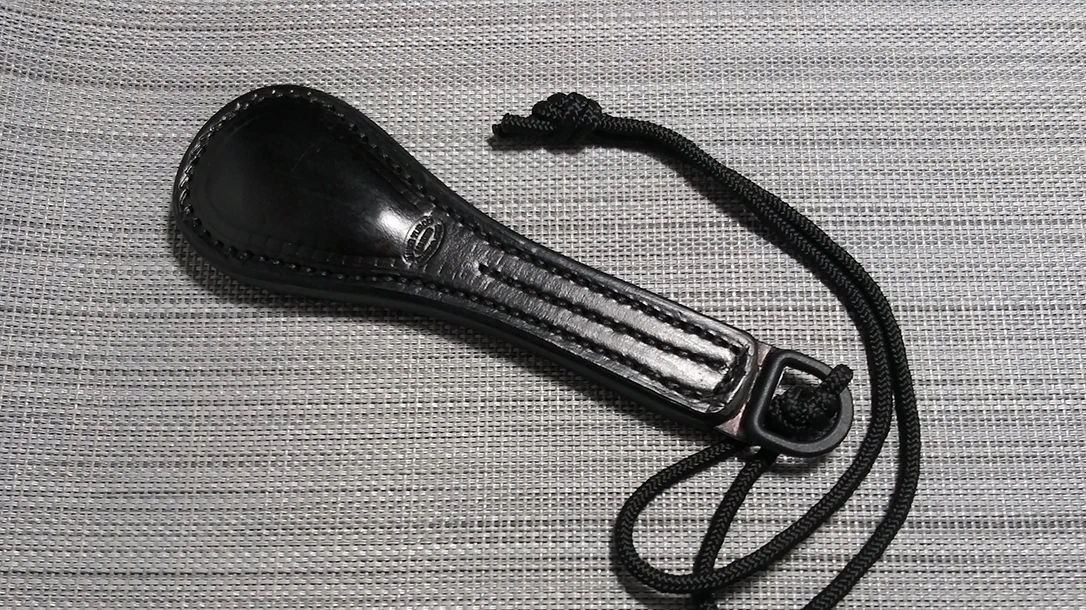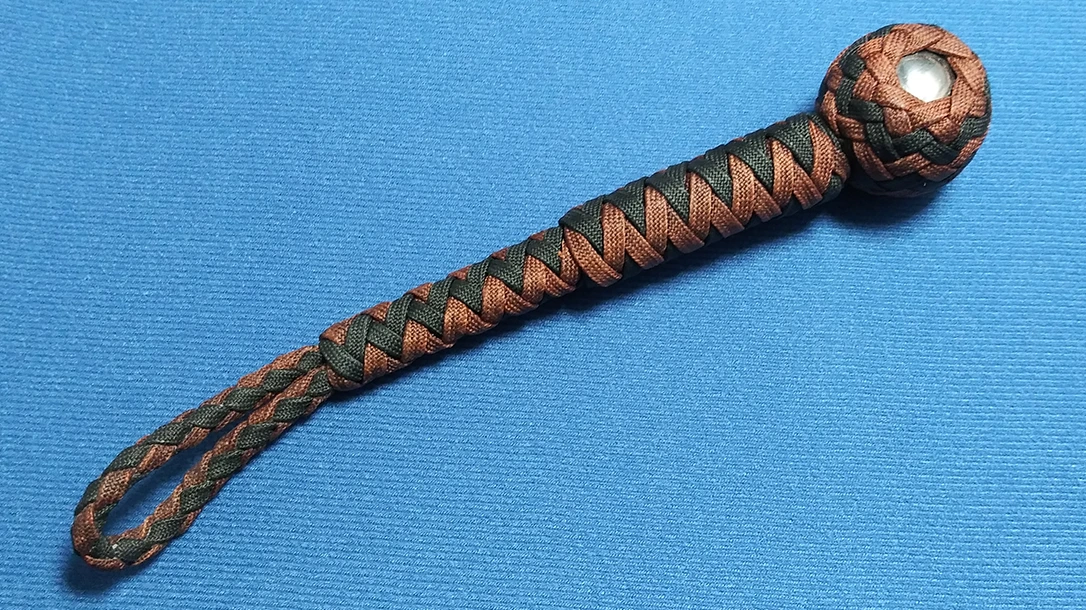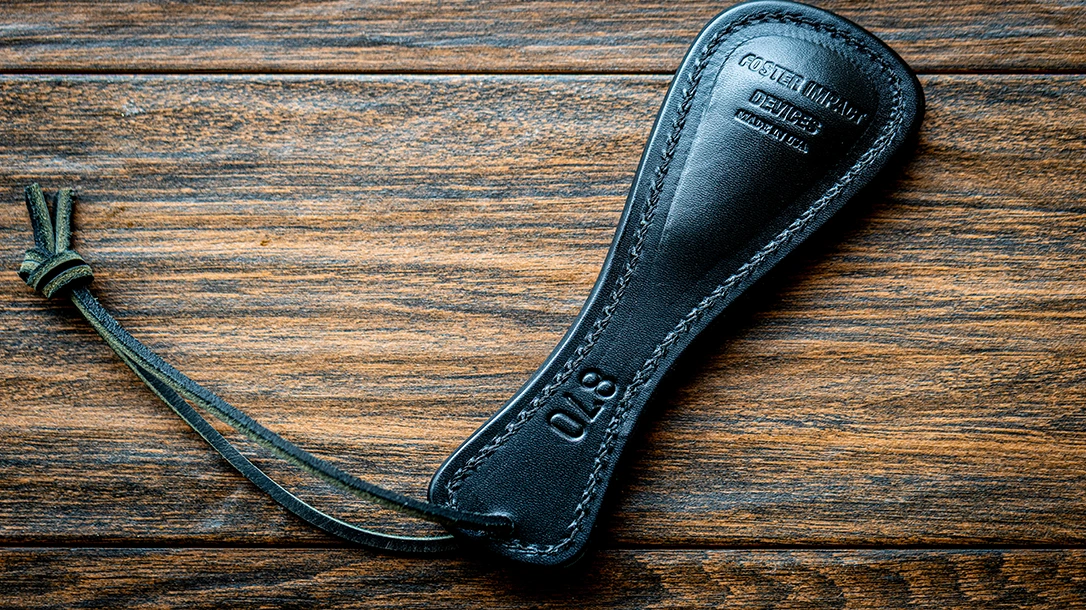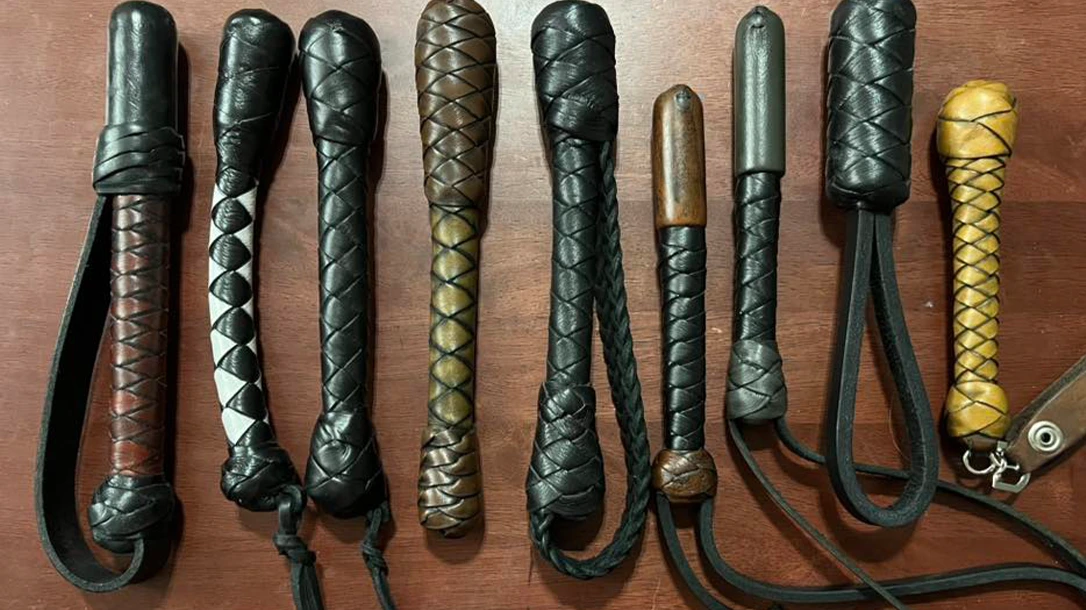Ever since Abel caught a rock upside the head, mankind has sought ever more efficient ways to smack one another around. Over the millennia, we’ve gotten pretty good at using impact weapons for the task at hand.
Law enforcement officers often carried the blackjack and sap from the mid-1800s until the 1960s. That’s when laws began changing, and many of these weapons fell out of favor. Which brings us to the standard cautions about checking the laws in your area before you carry or use one of these defensive tools. You may have the most honorable of intentions and desire nothing more than to defend yourself and your loved ones to the best of your ability. But if the laws in your jurisdiction say you can’t use a blackjack or sap to do so, you’ll need to explore other options.
Impact Weapons 101
People often use the terms sap and blackjack interchangeably, but they refer to two different, distinct weapons. We’re adding one more to the mix, too, called the slungshot.
Advertisement — Continue Reading Below
Before we dive into these nifty and perhaps even nostalgic weapons, let’s get this out of the way. In most self-defense situations, you’re best served by using a weapon that goes bang. Impact weapons, by their very nature, require you to be within arm’s reach of your attacker. If you can reach out to touch him, he’s close enough to do the same to you. A firearm, on the other hand, lets you do damage from a distance. Consider these to be backup weapons rather than your primary option.

Sap
Variations of this sort of weapon date back thousands of years. The sap as we know it today rose in popularity in the last 200 years or so. It consists of a heavy weight, often a chunk of lead or sometimes lead powder, that’s been squirreled away inside a casing. This is usually made of leather and can be plain or ornately detailed.
Advertisement — Continue Reading Below
The sap has a short handle to hold as you use the weapon. It may have a bit of flex to it, but it isn’t really springy. Some may have wrist lanyards. These are largely flattish weapons, perfect for hip pocket carry. They sort of resemble a beaver tail.
In use, you’re sort of slapping the target with the large, flat end of the sap. It isn’t a flick movement. Just swing, connect, and follow through.
There are a number of variants to the sap. One is the palm sap, which ditches the handle and just straps a weighted pouch to your palm. Coin saps are zippered pouches that you fill with spare change before you clock someone in the head with it. For those concerned about legalities, the coin sap might be a gray area in that it’s just something you use to carry loose change. But you might want to talk to someone who actually has a law degree before you go that route.
Advertisement — Continue Reading Below

Blackjack
While they can be about the same length, the blackjack is round, whereas the sap is flat. The blackjack is often made of braided leather or paracord. As a result, it has a fair amount of flex to it. Some models even add a spring inside to connect the head with the handle. The head will be weighted with lead or something similar to give the weapon some heft.
When the blackjack is swung at a target, the movement causes the weighted end to spring forward, with great force being transmitted upon impact. The springiness makes follow-up blows fast and easy.
Advertisement — Continue Reading Below
The blackjack can also serve as something akin to a loaded fist by holding the weighted end as you punch. The efficacy of this alternate use will depend on the size and weight of the blackjack.
Slungshot
A slingshot and a slungshot are very different weapons.
The slungshot was a maritime tool that was adapted for defensive purposes. Initially, it was simply a weighted knot tied at the end of a line. This was then thrown to someone so they could pull the line in, such as when mooring a boat.
Advertisement — Continue Reading Below
Someone realized that you could really brain someone with this sort of thing. The cord was shortened to make it into something you could carry easily. Today, the knot at the end often hides a large ball bearing.
To use the slungshot, the motion is more like swinging a hammer or a whip than it is throwing anything. You hold the loose end of the cord and let the weight hang free. Then, swing your arm forward at the target, and let the weighted end make contact.
They aren’t difficult to make, once you’ve mastered the monkey fist knot. For the weight, you can purchase half-inch or larger ball bearings from various online sources. I’ve even seen a couple of slungshots made with billiard balls, but they’re a bit large to carry around.
Advertisement — Continue Reading Below
The slungshot is a brutally effective weapon. So much so that it’s still illegal in an awful lot of places. Even so, it’s always been my favorite of the three.

Targets of Opportunity
When deploying an impact weapon, you don’t want to go ham and hit whatever you can reach. Some targets on the body will be much more effective than others.
Let’s stop for just a moment and be very clear about something. Using an impact weapon against another person, or indeed any living creature, is likely to cause serious, potentially permanent, injury. As with any weapon, be certain this is the necessary course of action to pursue. Once you swing and make contact, there’s no going back. Assuming the altercation isn’t taking place in some post-apocalyptic no man’s land, you should be able to articulate that your attacker had the ability to harm you, along with the opportunity and the intent. If any of those are missing, you might be putting yourself into some legal trouble.
With that out of the way, let’s start at the head. A blow with sufficient force will daze your attacker, perhaps even render them unconscious. Of course, it might also cause permanent brain damage. But, y’know, sometimes that’s the risk you have to take.
A bashed nose makes it difficult for them to see or breathe properly.
A good swat on the hand could break a few bones, same with the fingers. It’s pretty hard to punch someone or hold a weapon if you can’t make a fist.
Smacking an elbow or knee could dissuade your aggressor from further action, at least long enough for you to put your own knees to your chest and vacate the area.
Remember that the number one goal is to be able to go home and sleep in your own bed. If you achieve that, you win.

Improvised Solutions
There are many ways to toss together an impact weapon like these in a pinch. My friend Kevin Estela [https://www.kevinestela.com/] showed me one made from a short dog leash with a padlock affixed to the end. This option is particularly cunning in that you can carry the two elements with you almost anywhere you go without raising an eyebrow. Lots of people keep a padlock in their bag for when they go to the gym, and the dog leash is great for if you run across a stray. Should the need arise, you need to connect the two together and then swing for the fences.
Toss a rock or two into a sock, then tie a knot just below them, and you have a pretty good slungshot. It may not work well after repeated strikes, as the rocks might tear the fabric, but it’ll be fine for at least a couple of good hits.
Practice Makes Perfect
As with any weapon, you can’t expect mastery simply because you bought it. While it would be awesome if things worked that way, out here in Big People World, skills develop over time and with practice.
There are two components at work with successfully using a weapon like a sap, blackjack, or slungshot. First is deploying it from wherever it is you’re carrying it, such as a pants pocket. If you fumble that, your chances of prevailing in the battle dwindle rapidly. Practice that movement repeatedly until you can work in that muscle memory.
Greg Ellifritz is a highly regarded defense instructor. He once wrote that every single morning before he leaves the house, he draws his firearm five times. This is something he’s been doing for many years, and it’s a great habit to develop, no matter what you carry for a weapon.
The second half of the equation is hitting your target. There are different strikes with each weapon, including forward and backhand. For an improvised target, you could use a tree in the backyard. Wrap an old bedsheet around it at head level so you don’t chip bark off the tree or damage your weapon. Practice deploying and then swinging at the target. Change your position from time to time, as well as the angle of your strike.
As we said at the outset, none of these are primary defense weapons. There are better options out there. But there’s also a lot of historical relevance with these options. They’ve been around this long because they work.

















